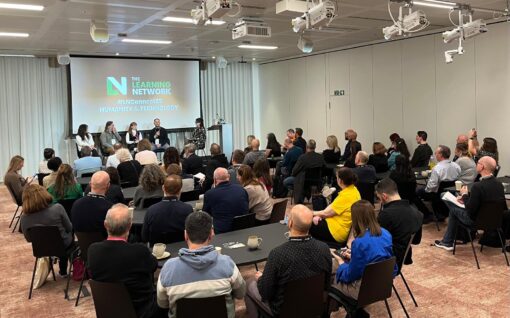The challenges of liberating academic research

Continuing our series on how research is communicated, Insights Media head of content Roisin Woolnough, looks at why academic research fails to reach a broader audience.
Mike Morrison recently spent six months working with an academic whose research findings are a game changer for L&D. Or they would be, Morrison says, if only the L&D community knew about them. The academic, a professor specialising in experimental psychology and working on distributed cognition, was looking at external thinking. And his research proves, says Morrison, that a lot of our problem solving happens not just in the brain as commonly thought, but outside of the brain and with the interactions of the environment around us.
“This professor has done some really interesting research, which I think could change the world of L&D and education,” explains Morrison, a business and people-focused coach specialising in change and transformation, who was shadowing the academic while undertaking an MSc in behavioural decision science. “It shows that we think better and quicker when we interact with things. However, the research is probably years away from being published anywhere in the context of learning.”
Currently, Morrison says a lot of L&D and education thinking is underpinned by the findings of the likes of Albert Mehrabian concerning the transmission of verbal and nonverbal messages. According to Mehrabian, there are three key things, with varying levels of importance, that determine our liking for a person when they are communicating their feelings: words 7%, tone of voice 38% and body language 55%.
However, Morrison says the research was conducted using emotion not understanding. “It was an experiment based on literal language and L&D (and the whole marketing and communication worlds) has taken that to mean that words aren’t important but tonality is. And this professor has proved something else.”
The problem is that the professor will not be ready to release his findings until he has proved every single element of his own findings and that, Morrison says, is likely to take a long time. In the meantime, what he has discovered will only be known by a select few – fellow academics in his community.
This is something that is happening all the time in academia, says Morrison, and it leads to a lot of really important and insightful research being held back or in many cases, not ever released to a wider audience. “A lot goes unpublished and probably 99.9999% of stuff generated gets buried,” he says. “There is a whole piece of content creation that is missing.”
What Morrison would like to see is academics talking about and sharing their thoughts and findings during the journey of discovery, rather than only at the end (if we’re lucky). But, that, he says, would require a significant individual and collective shift of mindset.
And by share, he doesn’t mean just in peer review journals, which are inaccessible to the average person, both in terms of having access to the journals and then being able to decipher the content. “You’ve got to understand psychology and research methods in order to read these papers. But accessibility is key – when things are accessible they make an impact. People have to be able to find this stuff, understand it and use it.”
While Morrison understands the mentality of wanting to prove a theory before sharing it, he thinks it would actually benefit the academic community to share findings and report on progress as it happens. This would raise the profile of research, prevent the duplication of work and could help academics access additional funding and draw more students in. University chancellors could view it as good advertising, Morrison says. “Organisations may be interested in something and will give an academic or an institution more money to run a study and continue a piece of research, for example,” says Morrison.
In order to appeal to a broader audience, Morrison says academics and institutions need to think about how and where to disseminate their findings and what types of content would work best. “We need a lay person’s interpretation, like with TED talks. TED talks work so well so why don’t universities do their own version of TED talks? They could just talk about what they are doing in ten-15 minutes in an accessible format.”
Or instead of a TED talk, it could just be a ten minute video presentation, or an infographic, or a 500 word summary of research that could slot straight into a trade journal – ie. is written for a lay audience. What is needed, Morrison says, is a strong bank of content capital that tells people about interesting and important findings.
At the moment, research is written up by academics for academics and unless you are used to the lingo and style of writing, it’s almost impenetrable and is very off putting. Morrison found himself in the very surprising situation of having to make his writing more inaccessible. “The most bizarre thing is that I was told that I had to write simply so that people could understand it, but I actually had to write hard so that people couldn’t understand it.” For example, when referencing other research, Morrison had to word it in such a way that he couldn’t be accused of plagiarism. While this is common academic practice, he believes it creates a distance between academia and real world application of research.
This is the kind of mentality that has to change if research is to become more accessible. While none of this is rocket science, it does require academics and institutions to start doing things differently. Morrison thinks there is a huge need for this to happen and that it will only take one or two universities to start talking about the great research going on for others to follow suit. But, who is going to break the communication barrier down first? That’s what he wants to know. He has been talking to chancellors at a handful of universities about introducing something along the lines of TED talks, but none have bitten yet.
Also in this series . . .

